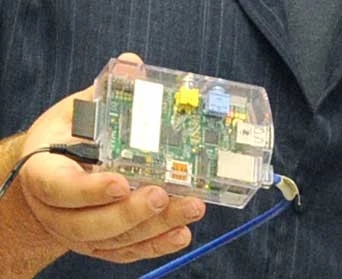Here are the key takeaways from the passage:
- A Beowulf cluster is an alternative to expensive supercomputers, made up of networked commodity computers that act as a single powerful machine. It offers cost-effectiveness, scalability, and a valuable learning experience for students.
- Building a Beowulf cluster involves planning hardware requirements, assembling individual computers, installing Linux and networking software, and configuring cluster management software to orchestrate tasks across nodes.
- Challenges include ensuring hardware compatibility, complex software configuration, debugging performance issues, and optimizing the system.
- Benefits include enabling groundbreaking research, developing highly sought-after technical skills, boosting career competitiveness, and fostering a sense of accomplishment.
- The cluster empowers new discoveries by students and sets an example of how open collaboration and technology can advance research for future generations.
- In summary, the passage describes how students took on an ambitious but rewarding project to build their own supercomputer on a limited budget. It required diligent planning, technical skills, perseverance through challenges, and teamwork – imparting valuable lessons while empowering new computational research. Their Beowulf cluster serves as an inspiration for hands-on learning and advancing knowledge through open innovation.
Beowulf clusters are an affordable alternative to expensive single-machine supercomputers, leveraging commodity hardware that is cheaply and readily available. Individual machines are linked together to act as a unified, highly parallel computing system.
Careful planning is required to determine appropriate hardware specifications based on computational needs. Procuring new or used components within budget constraints is an important early step.
Assembly involves meticulous installation of CPUs, memory, storage drives and networking components in each individual machine to ensure proper functionality. Attention to detail is critical at this stage. Linux is commonly used as the operating system due to optimizations for clustering. Configuring networking software enables communication between nodes to support distributed task processing.
Cluster management software like Open MPI and Slurm handles task scheduling, distributing work across nodes to maximize parallelization efficiency. Proper configuration is vital for performance. Common challenges relate to hardware/software compatibility issues, complex configuration troubleshooting, and debugging/optimizing to achieve peak performance from the combined system. Overcoming obstacles through perseverance and teamwork contributes significantly to the students' technical learning and skill development beyond their research projects alone. The cluster leaves a legacy by empowering new discoveries through expanded computational power and inspiring future generations through open collaboration and resourcefulness. Building the Beowulf cluster provided hands-on, practical experience with key computational science and system administration concepts. Students gained skills in areas like high performance computing, parallel processing, distributed systems, and network/software engineering. The modular, scalable nature of Beowulf clusters makes them well-suited for research domains with rapidly increasing computational demands over time, such as complex simulation, modeling, machine learning, etc. Additional nodes can flexibly expand capacity.
Troubleshooting hardware compatibility or software/network configuration issues required creative problem-solving, tenacity, and team coordination. This type of experiential learning translates well to professional competencies. Limited budgets are common for academic institutions, so the cost-effective Beowulf approach maximized the students' ability to pursue computationally intensive projects. This empowered novel research opportunities. Overcoming challenges through self-reliant effort likely boosted the students' confidence in technical problem-solving and self-sufficiency beyond training. The open-source software tools and modular cluster architecture set an example of collaborative innovation. This can inspire others to advance knowledge through non-proprietary sharing and distributed resources. Successful completion resulted in not just research benefits but resume-worthy achievements demonstrating technical execution, project management, and passion for hands-on computing.
The detailed planning, assembly and optimization process required cross-disciplinary teamwork and coordination between software, hardware, and application-specific roles and perspectives.
Building the cluster was a significant undertaking that spanned multiple phases from conceptualization to deployment. It required long-term commitment, coordination and perseverance from the students. Proper configuration of both the operating system and cluster management software was complex and critical. The students had to have a deep understanding of Linux, networking, and parallel computing frameworks. Technical challenges provided valuable learning experiences. Troubleshooting issues developed problem-solving, research and collaborative problem-solving skills. Completing such an ambitious open-source project showcased the students' technical leadership abilities and potential as future IT professionals. The computational capabilities unlocked new research potentials that may have led to scientific advances and publications.
It served as a proof of concept for cost-effective HPC and could inspire other students/researchers tackling resource-constrained problems. Being able to refine performance through optimization taught real-world lessons about scaling complex systems. Collaboration was vital as different students likely had complementary hardware, software and domain knowledge. The self-built supercomputer empowered continued research momentum beyond any single project or student team. It demonstrated how academic communities can solve expensive infrastructure issues through open-source ingenuity. In summary, this was an impressively challenging yet rewarding endeavor that spanned many learning domains.
Follow this link for complete project: Beowulf Revived: Students Unite to Build High-Performance Computer Cluster


